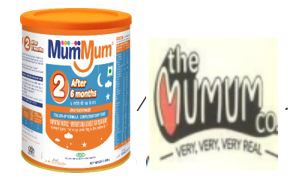Introduction
In 2019, the scope of the South African Genetically Modified Organisms Act 1997 (the GMO Act),(1) as amended by the Genetically Modified Organisms Act 2006,(2) in relation to new breeding techniques (NBTs) was explored and recommendations were made (for further details, please see "New breeding techniques and regulation of genetically modified organisms"). NBTs include many now popular and commonly used tools for genome editing, including clustered regularly interspersed short palindromic repeats (CRISPR).
Fundamentally, the debate related to whether NBTs and products arising from NBTs were subject to the current regulatory system governing genetically modified organisms (GMOs). The main question was related to the definition of GMOs in the GMO Act and which organisms fall within this definition and therefore must be regulated as GMOs in terms of the GMO Act, and which organisms will be excluded from the application of the GMO Act.
The GMO Act defines a GMO as "an organism the genes or genetic material of which has been modified in a way that does not occur naturally through mating or natural recombination or both".
The regulation of organisms created through NBTs and the characterisation of such organisms, or products derived from them, creates difficulties in that since such organisms do not necessarily incorporate genetic material from another organism in their genome, it can be extremely difficult to determine whether organisms were created by conventional breeding or random mutation, or that the organisms were indeed created through NBTs.
Recent development
In a public notice published on 27 October 2021, the position in South Africa was clarified by the Executive Council under the GMO Act, in which it was concluded that the current risk assessment framework that exists for GMOs and products derived from GMOs would also apply to organisms created through NBTs.
The Executive Council consists of representatives of seven different departments within the South African government and is an advisory body to the Minister of the Department of Agriculture, Land Reform and Rural Development (DALRRD) on matters relating to GMOs. The Executive Council is also the decision-making body that approves or rejects GMO permit applications.
Accordingly, the application templates for contained use, trial release, commodity clearance and general release of GMOs have been revised and there are now revised application forms for GMO permits.
Key concerns
The decision by the Executive Council has met with some criticism and disappointment within the agricultural industry in South Africa. This strict approach to organisms created using NBTs is contrary to the practices followed in several other countries in the world – most particularly, Brazil, Argentina, Japan and Israel – and has been argued to be onerous and impractical.
In particular, some agricultural industry concerns that have been raised include that:
- local innovators developing organisms created with NBTs or products derived from these organisms may be discouraged from developing NBT technology, in turn resulting in local innovation in the production of new and innovative plant varieties that make use of such techniques for pathogen resistance, drought tolerance and the like falling behind;
- the ability of local farmers to access such NBT organisms may be detrimentally affected, in turn resulting in similar challenges with regard to pathogen resistance, drought tolerance, and sustainable and environmentally conscious farming;
- foreign entities involved in the development of NBT organisms or products may be discouraged from importing such organisms or products into South Africa, to the detriment of the South African industry and consumers, and particularly in relation to food products. This could, at worst, result in food insecurity; or
- alternatively, products derived from NBT organisms may be imported into South Africa without proper regulatory approval, and since it is so difficult to characterise such products as derived from an NBT, there would be an unfair advantage created for unscrupulous entities.
This has led to an appeal under section 19 of the GMO Act by the Agricultural Business Chamber, which is engaging with DALRRD and the Executive Council to try to develop an alternative, effective, efficient and evidence-based regulation of products derived from NBTs. The proposal is that organisms generated through NBTs should not be subject to regulation under the GMO Act if they are identical to, or indistinguishable from, products that could have been obtained naturally or through conventional breeding methods.
The alternative approach proposed in the appeal is similar to a previously proposed approach in that rather than blanket regulation of non-natural processes (including the use of NBTs) for genetic modification of organisms, or the organisms created by such processes, provision should be made, within a system that is both process- and product-triggered, for regulation to focus on genetic modification that is likely to be more harmful, hazardous or risky to the environment, human and animal health than that which might be achieved by natural mating or natural recombination. This type of assessment could be performed by the regulator on a case-by-case basis, taking into account information provided by an applicant through a preliminary notification procedure.
Comment
Given the importance of NBTs in the development of new-generation plant varieties having improved properties in relation to pathogen resistance and drought tolerance, and to facilitate sustainable and environmentally conscious farming, the outcome of the appeal is awaited with much anticipation.
For further information on this topic please contact Joanne van Harmelen at ENS Africa by telephone (+27 21 410 2500) or email (jvanharmelen@ensafrica.com). The ENS Africa can be accessed at www.ensafrica.com.
Endnotes
(1) Act No. 15 of 1997.
(2) Act No. 23 of 2006.





